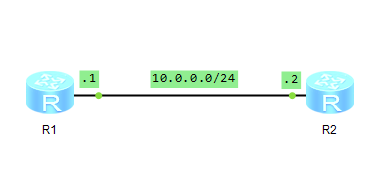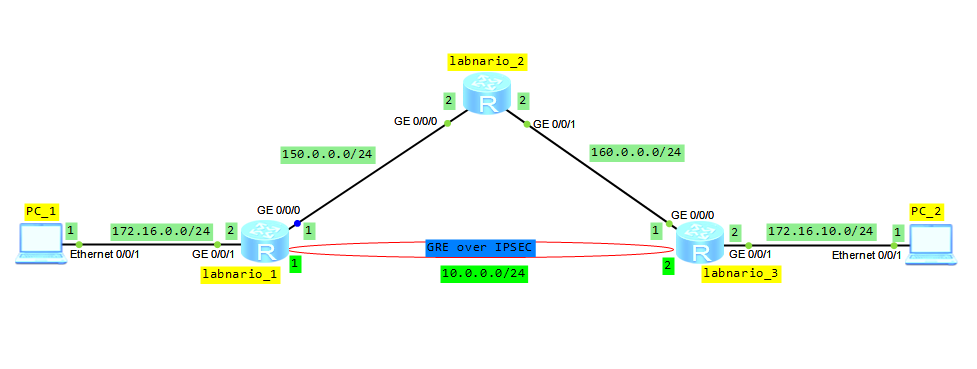Let’s imagine that we have a simple topology like below:
Configure subinterfaces on both AR routers for VLAN tag termination:
[R1]interface GigabitEthernet 0/0/0.100 [R1-GigabitEthernet0/0/0.100]ip address 10.0.0.1 24 [R1-GigabitEthernet0/0/0.100]dot1q termination vid 100 [R2]int GigabitEthernet 0/0/0.100 [R2-GigabitEthernet0/0/0.100]ip address 10.0.0.2 24 [R2-GigabitEthernet0/0/0.100]dot1q termination vid 100
Try to ping IP address of neighboring router:
[R1]ping 10.0.0.2
PING 10.0.0.2: 56 data bytes, press CTRL_C to break
Request time out
Request time out
Request time out
Request time out
Request time out
--- 10.0.0.2 ping statistics ---
5 packet(s) transmitted
0 packet(s) received
100.00% packet loss
 Labnario Huawei From Scratch
Labnario Huawei From Scratch



